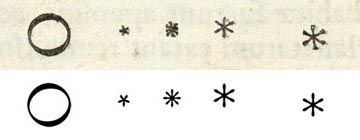Read this in other languages: English, Español, Português, Français
Jupyter metapackage for installation and documents
This documentation uses the Sphinx documentation engine.
The documentation is located in the docs/source folder. When you build the documentation, it will be placed in the docs/build folder.
It is written in a combination of reStructuredText and MyST Markdown.
There are a few ways to build the documentation; see below for instructions:
The easiest way to build the documentation locally is by using the nox command line tool. This tool makes it easy to automate commands in a repository, and we have included a docs command to quickly install the dependencies and build the documentation.
To build and preview the site locally, follow these steps:
-
Clone this repository.
$ git clone https://github.com/jupyter/jupyter $ cd jupyter
-
Install
nox$ pip install nox -
Run the
docscommand$ nox -s docs
This will install the needed dependencies in a virtual environment using pip.
It will then place the documentation in the docs/build/html folder.
You may explore these HTML files in order to preview the site.
There is another nox command that will do the above, and also create a live server that watches your source files for changes, and auto-builds the website any time a change is made.
To start this live server, use the following nox command:
$ nox -s docs-liveWhen the build is finished, go to the URL that is displayed. It should show a live preview of your documentation.
To stop serving the website, press Ctrl-C in your terminal
To build the documentation manually, follow these steps:
First, install the miniconda Python distribution.
Next, navigate to the /docs directory and create a conda environment:
conda env create -f environment.ymlActivate the environment:
source activate jupyter_docsBuild the docs using Sphinx with the following commands:
make clean
make htmlThe docs will be built in build/html. They can be viewed by opening build/html/index.html or starting an HTTP server and navigating to 0.0.0.0:8000 in your web browser.
python3 -m http.serverAnyone with push access to this repo can make a release of the Jupyter metapackage (this happens very rarely). We use tbump to publish releases.
tbump updates version numbers and publishes the git tag of the version.
Our GitHub Actions
then build the releases and publish them to PyPI.
The steps involved:
- Install tbump:
pip install tbump - Tag and publish the release
tbump $NEW_VERSION.
That's it!

























